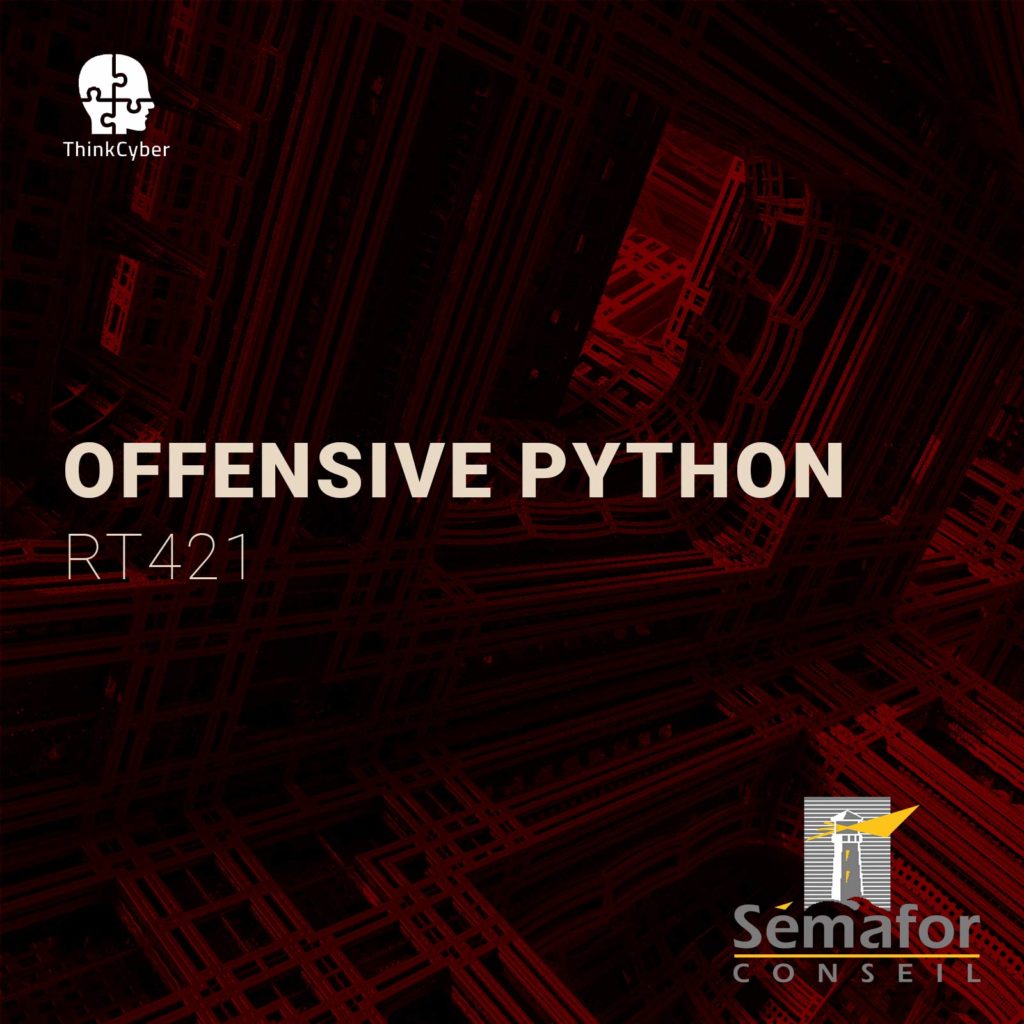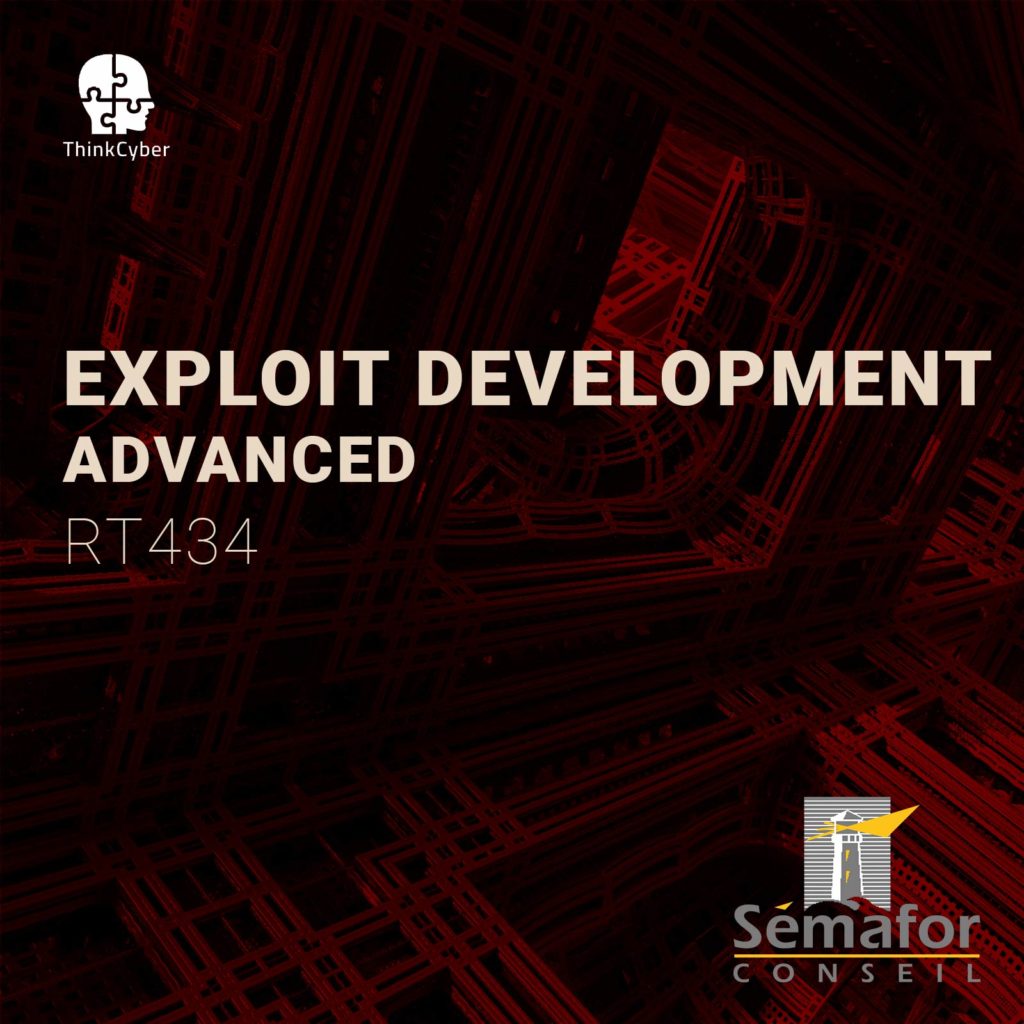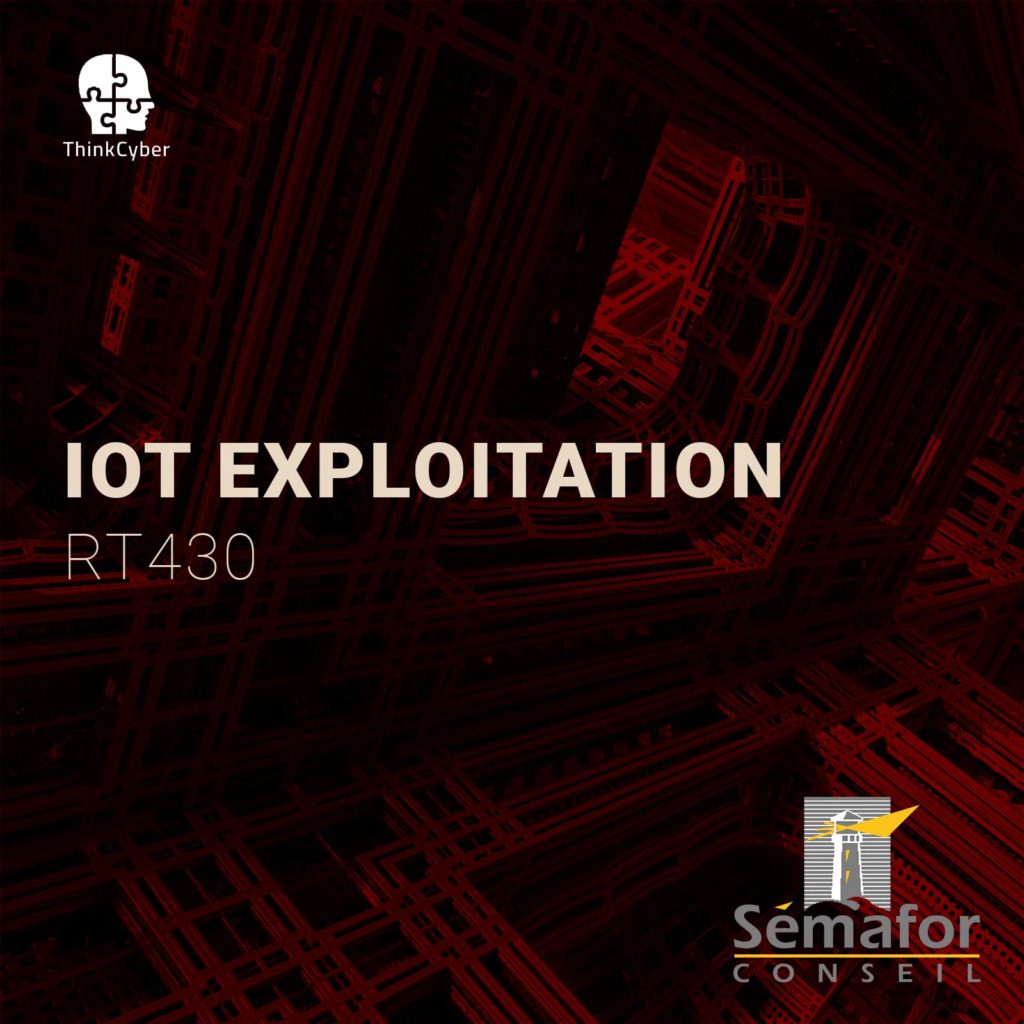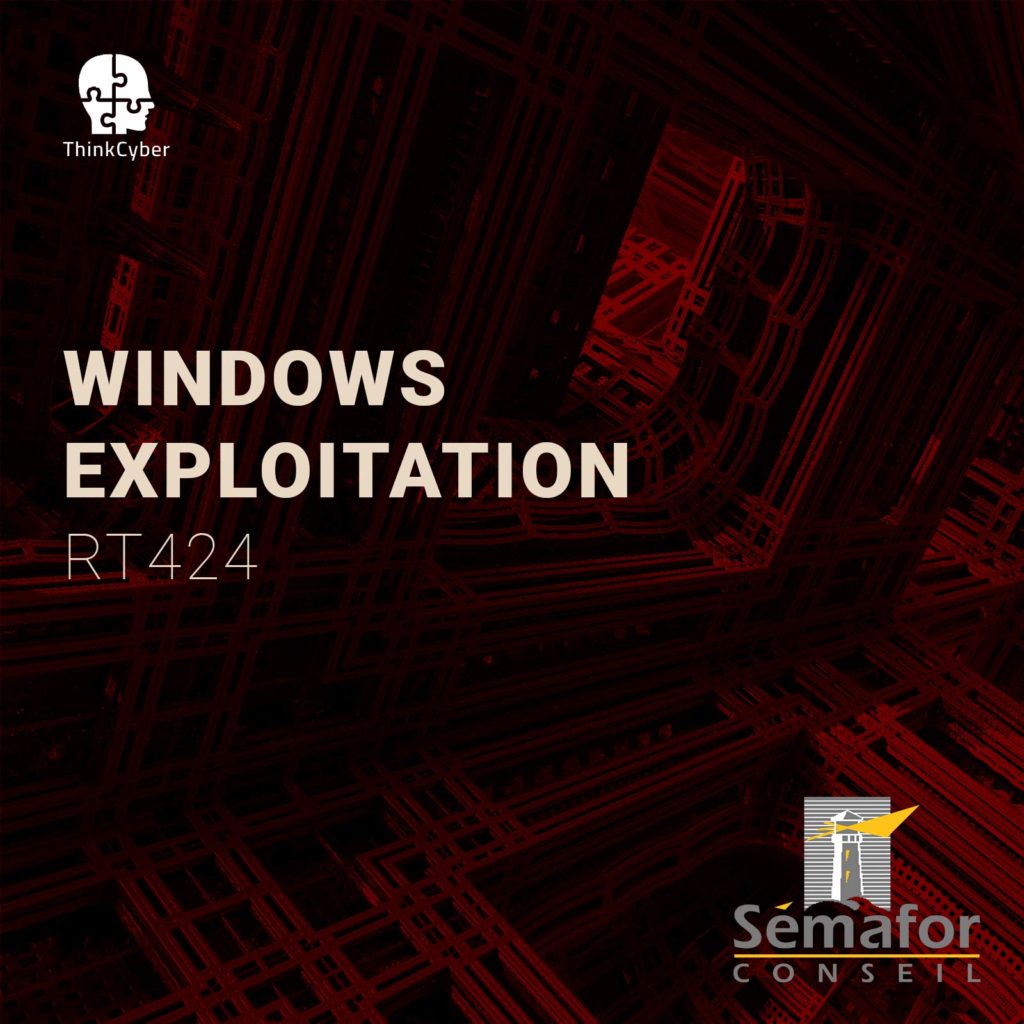Exploit Development
Intermediate
RT433
Table of Contents
Description
During this course, participants will learn programming languages and Shellcode writing. They will gain knowledge in program structure and execution patterns in order to know how to find vulnerabilities in, and exploit, programs and codes to gain control of target systems and applications.
This course covers how to write shellcodes, programs, and tools, essential skills for advanced penetration testers and software security professionals.
How to make the most of this course?
In order to succeed in the course, the following requirements must be met:
- Participation in all practical laboratories
- Self-work at home between lessons
- Repetition of materials, self-learning, performing tasks, etc…
In addition to regular classroom studies, the participant is required to practice at least 10 hours a week in order to gain practical experience in the field.
A personal computer suitable for running virtual machines, with an Internet connection
Transition of the scenarios in the Cyberium Arena.
Target audience
- Penetration testers
- Security professionals and vendors
- Research teams
Objectives
- Discovering different levels of vulnerabilities including zero-day vulnerabilities
- Understanding the methods of attacks
- Infrastructure and system defense
- Become familiar with APT and attacks that happened in recent years
- Understanding modern security mechanisms and how hackers bypass them
Pre-requisites
- Background in Malware Analysis
- ThinkCyber Level-2 Courses
Syllabus
Description
In this module, participants will learn a course that will speed up C-language programming capabilities to acquire the necessary skills in writing shellcode.
Technical content
- C programming fundamentals
o Variables
o Input and Output
o Keywords and Operators
o Expressions and Statements
o Control Flow
o The C Preprocessor
o Functions
▪ Reasons for Using Functions
▪ Basic Structure
▪ Return Statement
▪ Difference between ANSI-C and “Traditional C”
▪ Object Storage Classes and Scope
▪ Larger Programs
▪ Macros
o Pointers
▪ Pointer Definition and Use
▪ Pointers as Function Arguments: “Call by Value”
▪ Arrays
▪ Functions Returning Pointers
▪ Multidimensional Arrays
▪ Strings
▪ Command Line Arguments
▪ Pointers to Functions
o Code Structures
▪ Syntax and Operations
▪ typedef
▪ Array of Structures
▪ Use with Functions
▪ Linked Lists
▪ union
▪ enum
o Using C Libraries
▪ Memory Allocation
▪ Math Libraries
▪ Random Variables
▪ Input and Output
▪ Strings
▪ General Style
▪ Layout
▪ Naming Conventions
Description
In this module, participants will acquire experience in machine language Assembly to become familiar with Shellcode codes and write one by themselves.
Technical content
- x86 Processor Architecture
o Understanding Buses and Data Traffic
o Syscalls Table
o Number and Character Representation
o Basic Assembly x86 ProgrammingStandard Output
Registers
Variables and Reserves
Strings in Assembly
Working with Numbers
Jumps and Flags
Description
Shellcode is a set of instructions that executes a command in software to take control of or exploit a compromised machine. This module will provide an understanding of how Shellcode is built, why it is used, and how to write it using conventional methods and techniques.
Technical content
Background Information
o Processor Registers Structure
o Understanding Upper and Lower Data Block
o Syscalls with Arguments
o Zero Out a Register
o Windows Calling Convention
o Shellcode Tools


o Find the DLL Base Address
o Find the Function Address
o Call the Function
o Write the Shellcode
o Test the Shellcode
o Linux Shellcoding

o Windows Shellcoding


o Printable Shellcode
Labs
- Lab 1 C Programming
- Lab 2 C Functions
- Lab 3 Macros
- Lab 4 Memory Allocation
- Lab 5 Assembly
- Lab 6 Syscall
- Lab 7 Flags
- Lab 8 Shellcode Tools
- Lab 9 Linux Shellcode
- Lab 10 Working with DLL
Real cases studies
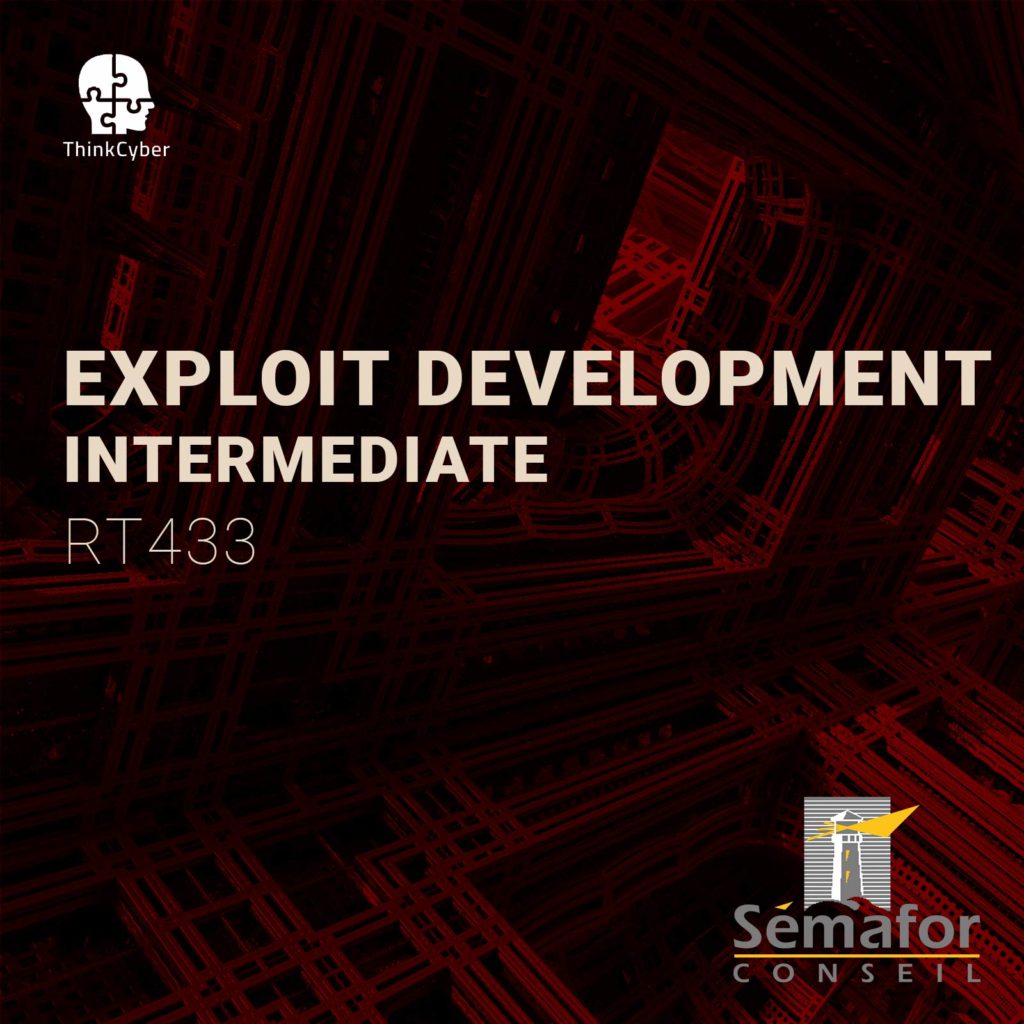
Course type
This course is delivered in the following ways:
- Virtual classroom with proctored labs and scenarios executed in our Cyberium Arena
- In situe classroom with proctored labs and scenarios executed in our Cyberium Arena
All sessions are recorded and attendees can replay them during 30 days. All course material is electronically made available to the participant.
Course Group: FOUNDATION
Hands-on / Theory MiX
The following course incorporates a high level of hands-on labs exercises, as well as real life case studies.
Certification
This course prepares the participant to the following certification:
- SEC760 (SANS)
Required EqUIPMENT
Network connection
As this course extensively uses a cloud based Learning Management System, including a lab arena, attendees need a stable broadband connection to the Internet.
BYOD – Bring Your Own Device
As it is a very practical course, and in order for the participants to make the most of the course, they need a laptop with the following capabilities:
- Audio and Video
- 8 GB RAM
- 200 GB Disk Space
- Virtualization capabilities ( supporting latest version of Virtualbox or similar virtual machine application)
And also a Good Headset with Mic

